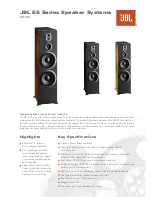
9
2.3. Preheating of the sleeve welding unit
As soon as the connecting lead is connected to the
mains, the welding unit begins to heat up. The green
power-on indicator lamp (6) and the red temperature in-
dicator lamp (7) light up. The unit requires about 10 min.
to heat up. Once the required temperature is reached,
the built-in thermostat cuts off the power supply to the
heating element. The red temperature control lamp turns
off. Whenever the red temperature control lamp is lit, the
no welding should be carried out.
2.4. Selecting the correct welding temperature
The welder heating element is preadjusted to the aver-
age welding temperature for PP pipes (260°C). Depend-
ing on the pipe material and gauge of the pipe walls,
it may be necessary to adjust this temperature. In this
case, observe the manufacturer’s information on the
pipes or mouldings without fail. In addition, the tempera-
ture of the welding tools (spigot and socket) should be
checked with an electric surface thermometer. If neces-
sary, the temperature can be adjusted by turning the
temperature adjusting screw (8). In this case, it should
be remembered that the heating element must not be
used until 10 minutes after the preset temperature has
been reached.
3. OPERATION
3.1. Description of process
In welding with the sleeve welder, the pipe and sleeve
are welded together overlapping. The end of the pipe
and moulded sleeve are heated to welding tempera-
ture by means of the welding tool (spigot and socket),
then welded together. The end of the pipe and fitting are
matched to the welding spigot and socket respectively
in such a way that a build-up of pressure takes place in
the joint when the two components are mated (Fig. 3).
3.2. Preparations for welding
Take care to observe the information issued by the man-
ufacturer of the pipes or mouldings. The end of the pipe
must be cut off square and flat, either with a pipe cutter
or pipe shears. In addition, the end of the pipe should be
chamfered to facilitate insertion into the socket. This pro-
cess should be performed with the pipe chamfering unit.
Immediately before welding, the end of the pipe and in-
terior of the sleeve and, if necessary, the heating spigot
and socket should be cleaned with non-adherent paper
or a non-fraying cloth and spirit or industrial alcohol. In
particular, no remnants of plastic must be left adhering to
the coating on the heating spigot or socket. When clean-
ing the welding tools, take care to ensure without fail
that their anti-adhesive coating is not damaged by tools.
The welding surfaces must not be touched again before
welding takes place.
3.3. Welding process stages
3.3.1. Heating-up
For the heating-up process, the pipe and moulding are
pushed axially onto the welding tools in a continuous
movement until they reach the stop or the marking on
the tools. During the heating process, heat penetrates
into the joint faces and brings them up to welding tem-
perature.
3.3.2. Changeover and joining
After the heating process, the pipe and moulding are
pulled away from the welding tools in a series of jerks and
pushed together, without twisting, as far as they will go.
3.3.3. Setting
Connected sections must be fixed (be kept together)
within a short time.
4. MAINTENANCE
WARNING
Before any repair work, pull the mains plug! This work
may only be performed by qualified personnel.
4.1. Maintenance
Units are entirely maintenance-free.
4.2. lnspection/repairs
The anti-adhesive coating on the heating element must
be cleaned with nonadherent paper or a non-fraying
cloth and spirit or industrial alcohol before each welding
process. Any remnants of plastic adhering to the heating
element must be cleaned off in the same way. In this pro
-
cess, take care to ensure that the anti-adhesive coating
on the heating element is not damaged by tools.
5. ACTION IN CASE OF TROUBLE
5.1. Trouble:
Sleeve welding unit does not
heat.
Cause:
● Sleeve welding unit is not plugged in.
● Mains lead is defective.
● Mains socket is defective.
● Unit is defective.
5.2. Trouble:
Plastic remnants stick onto the
heating tools.
Cause:
● Heating tools are dirty (see 4.2.).
● Anti-adhesive coating is damaged.
6. DISPOSAL
The heating element muff welding equipment may not
be thrown into the domestic waste after use. It must be
disposed of according to the legal regulations.
Содержание 91271181
Страница 1: ...Bedienungsanleitung 4 EN User s Manual 7 Mode d emploi 10 13 BRS 2000 91271181...
Страница 17: ...Exploded view...
Страница 18: ...RU FR DE GB Garantiebedingungen Warranty terms Conditions de garantie...
Страница 25: ......
Страница 28: ......
Страница 29: ...bort global com...
Страница 30: ...30...
Страница 31: ...31...










































